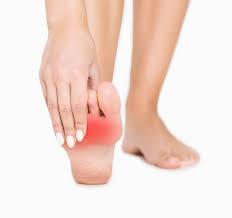There are four main types of diabetic neuropathy. You can have one type or more than one type of neuropathy. Symptoms will depend on the type you have and which nerves are affected. Usually, symptoms develop gradually. You may not notice anything is wrong until considerable nerve damage has occurred.
Peripheral neuropathyThis type of neuropathy may also be called distal symmetric peripheral neuropathy. It's the most common type of diabetic neuropathy. It affects the feet and legs first, followed by the hands and arms. Signs and symptoms of peripheral neuropathy are often worse at night, and may include:
- Numbness or reduced ability to feel pain or temperature changes
- Tingling or burning sensation
- Sharp pains or cramps
- Increased sensitivity to touch — for some people, even a bed sheet’s weight can be painful
- Serious foot problems, such as ulcers, infections, and bone and joint pain
Autonomic neuropathyThe autonomic nervous system controls your heart, bladder, stomach, intestines, sex organs, and eyes. Diabetes can affect nerves in any of these areas, possibly causing:
- A lack of awareness that blood sugar levels are low (hypoglycemia unawareness)
- Bladder or bowel problems
- Slow stomach emptying (gastroparesis), causing nausea, vomiting, and loss of appetite
- Changes in the way your eyes adjust from light to dark
- Decreased sexual response
Proximal neuropathy (diabetic polyradiculopathy)This type of neuropathy — also called diabetic amyotrophic — often affects nerves in the thighs, hips, buttocks or legs. It can also affect the abdominal and chest area. Symptoms are usually on one side of the body but may spread to the other side. You may have:
- Severe pain in a hip and thigh or buttock
- Eventual weak and shrinking thigh muscles
- Difficulty rising from a sitting position
- Severe stomach pain
Mononeuropathy (focal neuropathy)There are two types of mononeuropathy — cranial and peripheral. Mononeuropathy refers to damage to a specific nerve. Mononeuropathy may also lead to:
- Difficulty focusing or double vision
- Aching behind one eye
- Paralysis on one side of your face (Bell's palsy)
- Numbness or tingling in your hand or fingers, except your pinkie (little finger)
- Weakness in your hand that may cause you to drop things


